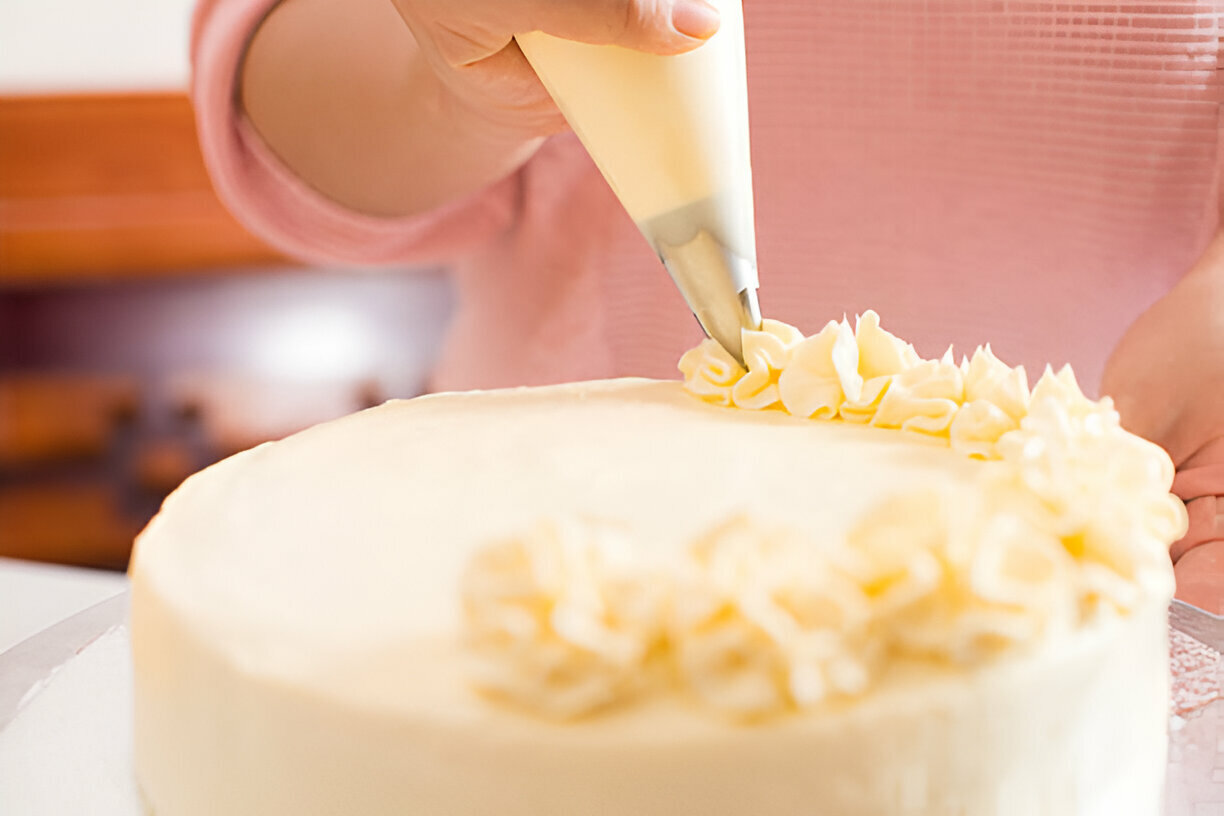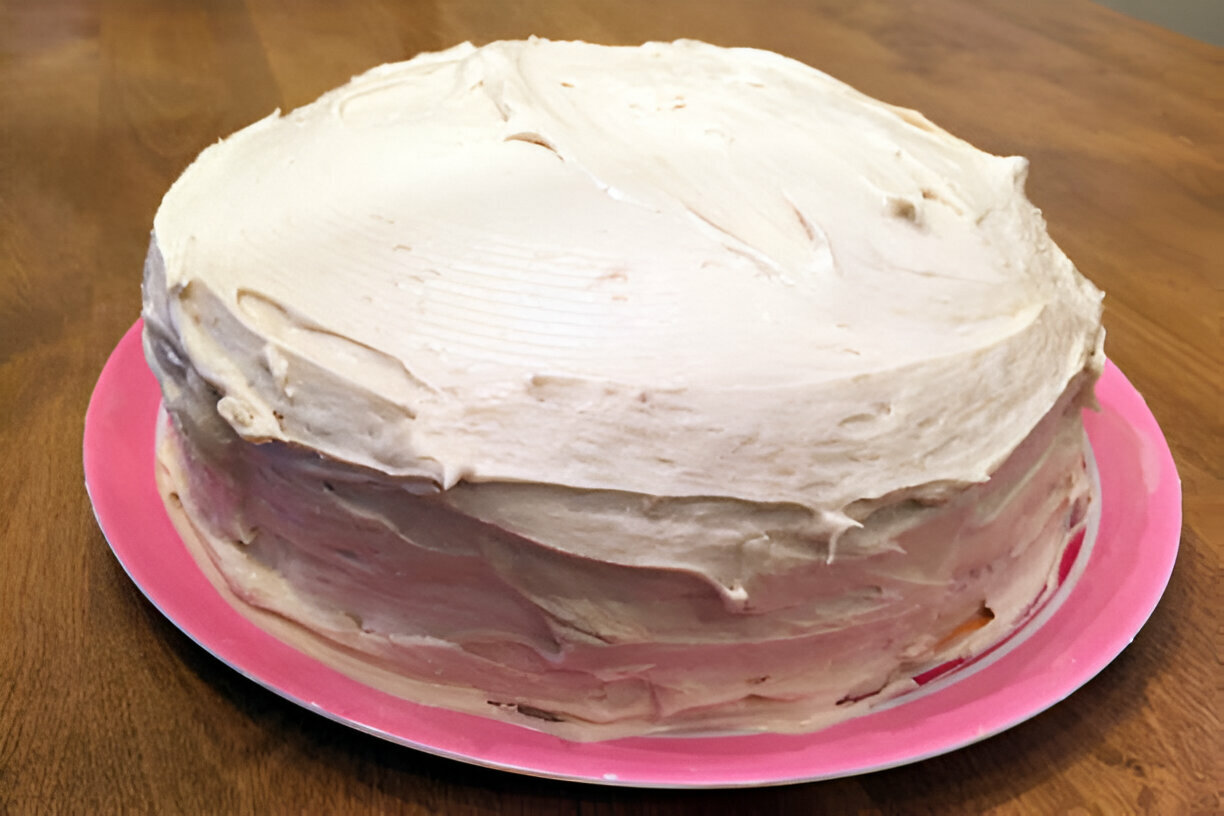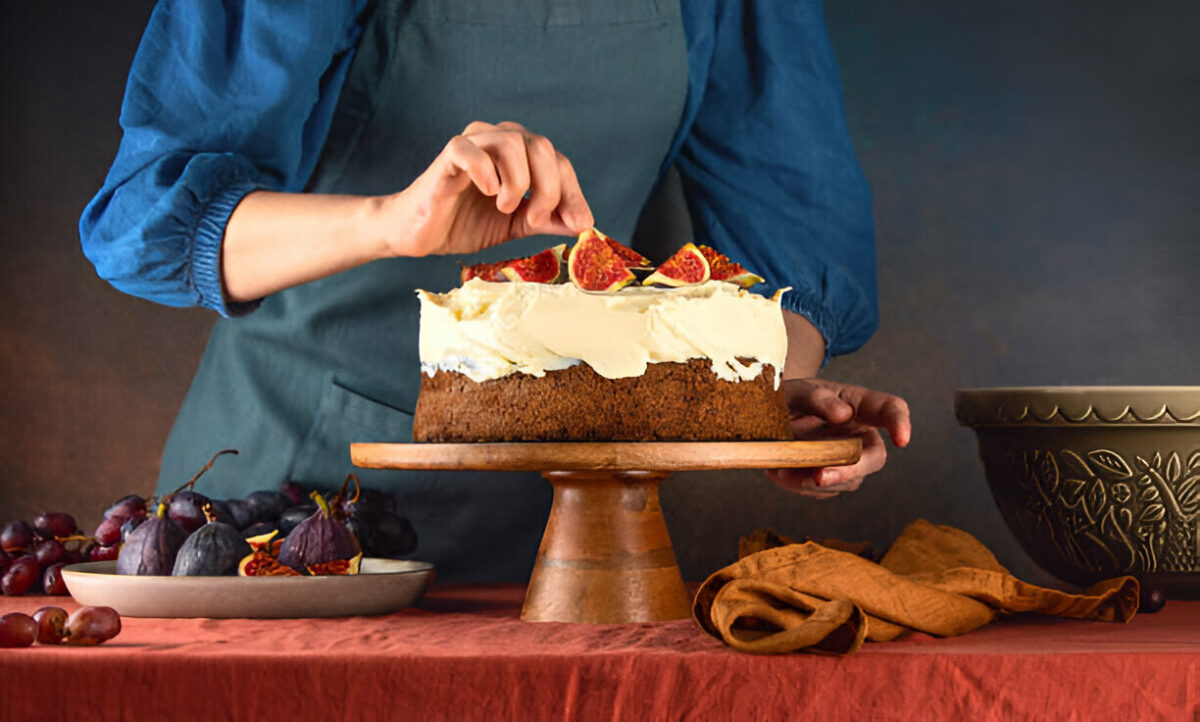Storing a cake with buttercream frosting might seem tricky but it doesn’t have to be. As a passionate home baker, I’ve learned that the right storage techniques can keep my cakes fresh and delicious for days.
Whether you’re preparing for a special occasion or just want to enjoy a slice of heaven later, knowing how to properly store your masterpiece is essential.
How To Store A Cake With Buttercream Frosting
Storing a cake with buttercream frosting involves specific steps for optimal freshness and taste. Follow these straightforward guidelines to keep your cake delicious.
- Cool the Cake
Allow the cake to cool completely at room temperature. Placing a hot cake in storage can cause condensation and melt the frosting. - Use a Cake Box
Place the cake in a cake box. This provides protection and prevents the cake from absorbing odors. Ensure the box is large enough for any decorative elements. - Cover with Plastic Wrap
If a cake box is unavailable, cover the cake with plastic wrap. Wrap it tightly while avoiding direct contact with the frosting. Use toothpicks to elevate the wrap, preventing it from sticking. - Store in the Refrigerator
For short-term storage, keep the cake in the refrigerator. The buttercream frosting holds up well in cooler temperatures but can dry out without proper coverage. - Refrigerate for Up to Five Days
A cake can stay fresh in the fridge for up to five days. Beyond this period, consider freezing the cake for longer storage. - Freeze for Long-Term Storage
To freeze the cake, slice it if preferred. Wrap each piece in plastic wrap, then place them in a freezer-safe container. This can extend the cake’s life for up to three months. - Thawing the Cake
When ready to enjoy, remove cake pieces from the freezer. Thaw them in the fridge for several hours or at room temperature for one to two hours.
This always ensures my buttercream frosted cakes remain fresh and flavorful, perfect for any occasion.
Materials Used To Store Cake With Buttercream Frosting

Use the following materials to store a cake with buttercream frosting effectively.
Cake Box or Airtight Container
Select a sturdy cake box or an airtight container. The cake box provides ample space for height while protecting the frosting. An airtight container prevents exposure to air, preserving moisture and flavor. Opt for a size that fits the cake snugly to minimize shifting.
Plastic Wrap or Aluminum Foil
Use plastic wrap or aluminum foil for additional protection. Plastic wrap seals in moisture effectively, while aluminum foil can provide a barrier against odor absorption in the refrigerator or freezer. Either option supports maintaining the cake’s quality by guarding against environmental factors.
Preparation Steps
Proper preparation ensures the best storage outcomes for cakes with buttercream frosting. Follow these essential steps to maintain freshness.
1. Allow the Cake to Cool
Allow the cake to cool completely at room temperature for at least 1 hour. A fully cooled cake prevents moisture buildup and soggy frosting, ensuring the cake remains stable during storage.
2. Apply a Crumb Coat
Apply a crumb coat before storing. A thin layer of buttercream acts as a barrier, sealing in crumbs and preventing them from mixing with the main frosting layer. This step also enhances the overall appearance when the cake is served.
3. Chill the Cake Briefly
Chill the cake briefly in the refrigerator for 20 to 30 minutes after applying the crumb coat. This helps set the buttercream, making it firmer and less prone to smudging while protecting the frosting during storage.
Storing Methods
Proper storage techniques extend the lifespan of a cake with buttercream frosting. Here are effective methods for both short-term and long-term storage.
Short-Term Storage
For short-term storage, refrigerating the cake preserves its freshness and flavor. Wrap the cake with plastic wrap to prevent moisture loss and protect the frosting. If the cake is uncut, this method maintains moisture effectively. Placing the wrapped cake in a sturdy cake box enhances protection against fridge odors.
Alternatively, I recommend an airtight container if using plastic wrap isn’t feasible. When refrigerated, a buttercream-frosted cake lasts up to five days without significant loss of quality. Before serving, take the cake out and allow it to reach room temperature for 20 to 30 minutes to restore its texture and flavor.
Long-Term Storage
Proper long-term storage ensures cakes maintain their quality while maximizing shelf life. Two key processes involve freezing and thawing.
Freezing the Cake
Freezing preserves cakes with buttercream frosting effectively. I wrap the cooled cake tightly in plastic wrap, ensuring no exposed areas to prevent freezer burn. Using aluminum foil for added protection secures the wrap.
I can freeze the cake whole or sliced; whole cakes retain moisture better, while slices offer convenience for later servings. Cakes can remain in the freezer for up to three months without significant quality loss.
Thawing Process
Thawing requires care to maintain texture and flavor. I transfer the frozen cake to the refrigerator for several hours or overnight. This slow defrosting method minimizes condensation and maintains moisture levels.
Once thawed, I allow the cake to sit at room temperature for 20 to 30 minutes before serving. This step enhances the flavors and texture, making the cake just as delightful as when freshly baked.
Helpful Tips

Proper storage techniques significantly enhance the longevity and quality of cakes with buttercream frosting. Implementing these best practices ensures a delightful experience each time you enjoy your cake.
Best Practices for Storing Cake
- Cool Completely: Cool the cake at room temperature for at least one hour before storage. This prevents condensation and sogginess.
- Use a Cake Box: Store the cake in a sturdy cake box to protect it from external elements and maintain freshness.
- Wrap Tightly: If not using a box, use plastic wrap to cover the cake fully. Secure ends carefully to avoid exposure to air.
- Refrigerate: For short-term storage, place the wrapped or boxed cake in the refrigerator. This prolongs its freshness while preventing moisture loss.
- Allow to Reach Room Temperature: Before serving, let the cake sit at room temperature for 20 to 30 minutes to recover its texture and flavor.
- Skipping Crumb Coat: Neglecting to apply a crumb coat can lead to visible crumbs in the frosting and affect presentation.
- Storing in the Wrong Container: Using a loose or non-airtight container increases the risk of the cake drying out or absorbing fridge odors.
- Over-chilling: Over-chilling the cake can harden the buttercream, compromising its texture when served.
- Freezing Unwrapped Cakes: Placing unfrosted or improperly wrapped cakes in the freezer heightens the chance of freezer burn and loss of flavor.
- Thawing Incorrectly: Thawing the cake at room temperature instead of in the refrigerator may introduce excess moisture and lead to sogginess.
By following these best practices and avoiding common pitfalls, cakes with buttercream frosting remain fresh, delicious, and appealing for every occasion.
Troubleshooting
Addressing common issues can significantly improve cake storage outcomes.
Cake Drying Out
To prevent cake drying out, ensure a tight seal around the cake when storing. Use plastic wrap or an airtight container. If the cake remains uncovered in the fridge, moisture evaporates, leading to a dry texture. Also, applying a crumb coat before frosting helps retain moisture by sealing it in. For longer storage, consider freezing, wrapping thoroughly in plastic wrap and aluminum foil, which protects the cake against freezer burn.
Buttercream Losing Texture
To maintain buttercream texture, avoid condensation on the frosting. Store the cake in a cool, dry environment. When storing in the refrigerator, ensure it is tightly wrapped or in a protective container to keep humidity at bay. If the buttercream becomes soft or loses shape, refrigerate the cake for 15 to 30 minutes before serving to firm it up. Avoid freezing buttercream-frosted cakes for extended periods, as texture can suffer upon thawing.
Conclusion
Storing a cake with buttercream frosting doesn’t have to be a challenging job. By following the right techniques I’ve shared, you can keep your cake fresh and delicious for days. Whether you choose to refrigerate for short-term enjoyment or freeze for longer storage, the key is in the preparation and protection.
Remember to let your cake cool completely and wrap it well to maintain its moisture and flavor. With these simple steps, you can confidently enjoy your baked creations at their best. So go ahead and indulge in that slice of cake knowing it’ll taste just as delightful as the day you made it. Happy baking!
Frequently Asked Questions
How should I store a cake with buttercream frosting for short-term use?
For short-term storage, wrap the cake in plastic wrap or place it in a sturdy cake box. Refrigerate it for up to five days to maintain moisture and protect the frosting. Ensure it cools completely before wrapping to prevent sogginess.
Can I freeze a cake with buttercream frosting?
Yes, you can freeze a buttercream-frosted cake. Wrap it tightly in plastic wrap, then secure it with aluminum foil to prevent freezer burn. It can last up to three months in the freezer without losing quality.
What is a crumb coat, and why should I use it?
A crumb coat is a thin layer of buttercream applied to seal in crumbs before the final frosting layer. It helps create a smooth finish, enhances the appearance of the cake, and prevents moisture loss when stored.
How do I thaw a frozen buttercream cake properly?
To thaw a frozen buttercream cake, transfer it to the refrigerator for several hours or overnight to minimize condensation. Once thawed, let it sit at room temperature for 20 to 30 minutes before serving for optimal texture and flavor.
What common storage mistakes should I avoid?
Avoid common pitfalls like not using a crumb coat, leaving the cake uncovered, freezing without wrapping, and over-chilling. These mistakes can lead to moisture loss, soggy frosting, or a compromised cake texture.

